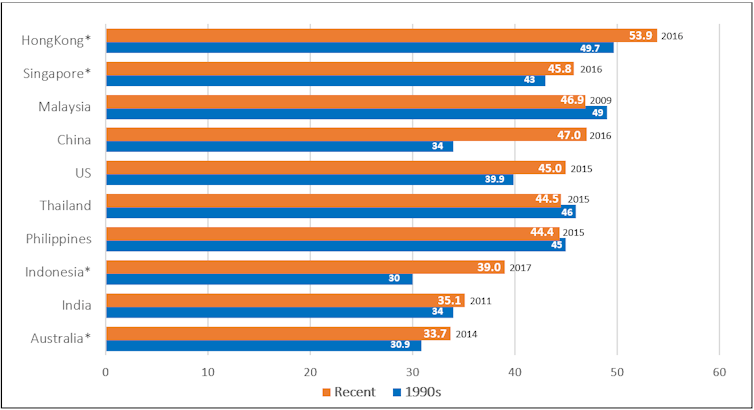Income Gap Per Country
Find compare and share oecd data by indicator.
Income gap per country. The united states has the fourth highest poverty rate of 17 8. Reviewed post tax and transfer gini coefficients published by the organization for economic cooperation and. The previous visualization which showed the the change from 1820 to the year 2000 is based on estimates of inflation adjusted average incomes per country gdp per capita and a measure of income inequality within a country only. Countries are classified each year on july 1 based on the estimate of their gni per capita for the previous calendar year.
The average wage is a measure of total income after taxes divided by total number of employees employed. The pay gap between the highest and lowest earners in the uk has grown more quickly than in any other high income country since 1975. The world economic forum wef gathered data from the world bank the organisation for economic co operation and development and other sources and along with other indicators to create the inclusive. Data showed the money earned by the country s top 1 per cent of earners doubled from 7 1 per cent of the total uk income in 1970 to 14 3 per cent in 2005.
Costa rica follows at 20 9 then romania at 17 9 and the united states at 17 8. The above visualization is based on estimates of inflation adjusted average incomes per country gdp per capita and single point estimates of within country income inequality. In this article the average wage is adjusted for living expenses purchasing power parity ppp the wage distribution is right skewed. While this gives us a rough idea of how the distribution of incomes changed it is neither very detailed nor very precise.
Income inequality is defined as a measure that highlights the gap between different individuals or households disposable income in a particular year and in a given country. South africa has the largest wealth inequality gap worldwide where the top 1 of earners take home almost 20 of income and 90 of south african earners take home only 35 of all income. It gives us a rough idea of how the distribution of incomes changed but it is not very detailed and not very precise. Income groupings remain fixed for the entire world bank fiscal year i e until july 1 of the following year even if gni per capita estimates are revised in the meantime.
Today the gini coefficient is still one the most widely used tool to chart the economic gap within a country s wealthiest and poorest citizens.
